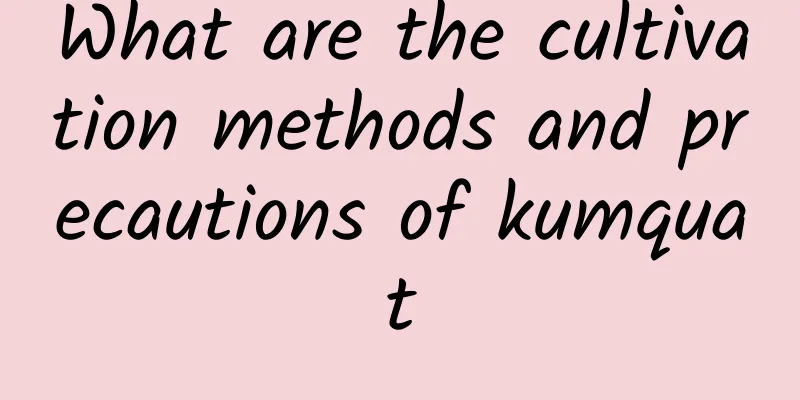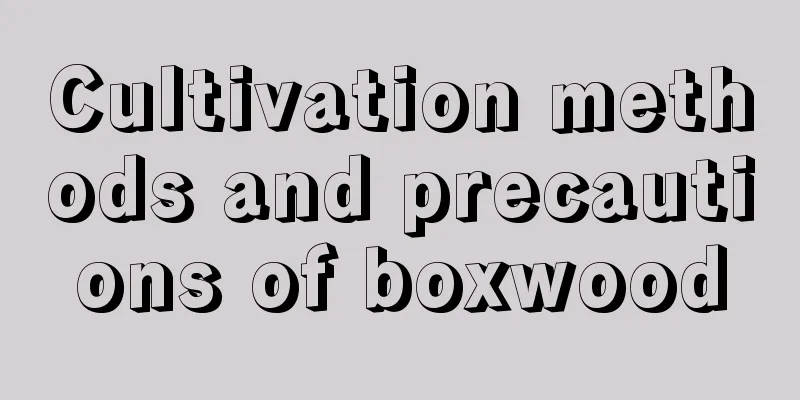What are the cultivation methods and precautions of kumquat

Kumquat growth habitsKumquat likes warm, humid and sunny environment. It is relatively cold-resistant, drought-resistant, slightly shade-tolerant, and also avoids extreme heat. Fertile, loose and acidic soil is preferred for cultivation. It can be planted in most parts of my country, especially potted kumquat trees. As long as cold-proof measures are taken, it can be cultivated in the cold northern regions. Kumquat cultivation methodSoil: Kumquat likes acidic soil containing humus. You can collect some leaf mold, add a portion of garden soil, and mix in some coarse sand or coal slag. When potting, apply a small amount of fermented chicken manure, sheep manure and other organic fertilizers to the bottom of the pot to make the plant grow more vigorously. Light: Except for the high temperature and strong light period in summer, the plants should be exposed to more light in other seasons. Temperature: In winter, it is best to control the ambient temperature above 10℃. You can also put a plastic bag on the tree top and punch a few small holes on it for ventilation, which can also play a role in keeping warm. Watering: The soil in the pot should be kept moist during the growing period. Stop spraying water on the leaves or avoid natural precipitation from the flowering period to the young fruit period. The watering frequency should be increased during the high temperatures in midsummer, and the soil in the pot should be kept semi-wet in winter. Fertilization: Kumquat likes fertilizer. Except for applying base fertilizer when changing the soil, liquid fertilizer should be applied mainly for the rest of the time. Nitrogen fertilizer should be applied to promote germination 10 days before buds sprout, and flowering fertilizer should be applied in early May, which should be organic fertilizer mainly composed of nitrogen and potassium. Pruning: Prune the plant heavily in late winter and early spring every year, retain 2 to 3 buds on each branch, and remove diseased and insect-infested branches, densely grown branches, and overgrown branches. Kumquat cultivation precautionsPest and disease control: The main pests and diseases include red spider mites, scale insects, leaf miners, canker diseases, scab diseases, etc., which must be controlled in time. |
<<: What are the breeding methods and precautions for red
>>: What are the methods and precautions for cultivating jasper?
Recommend
Osmanthus cultivation and Feng Shui knowledge
Cultivation method of osmanthus Osmanthus prefers...
The efficacy and function of arrow leaf okra
Use as medicine This is the main function we are ...
When is the best season to plant celery?
Celery, a popular vegetable , prefers cool climat...
How to prune old branches of potted green radish
1. Methods If you find old and dead branches on t...
What to do if peony leaves turn yellow
1. Reasonable watering Cause: Improper watering, ...
How to grow Gloxinia vigorously
one. soil: A lush potted plant cannot do without ...
Cultivation methods and precautions of red clover
1. Maintenance methods 1. Temperature: Red clover...
How to care for Tiger Pilan during its dormancy period
Growing conditions of Tiger Pilan Tiger Piranha i...
How to prune the bonsai
Pruning time for bonsai Jinggeda bonsai is usuall...
Flowering period maintenance of mountain azalea
Flowering period control In fact, it is not compl...
How often should aloe vera be watered in summer?
How often should aloe vera be watered in summer? ...
What kind of fertilizer is good for tea base fertilizer (base fertilizer application method)
The role of tea base fertilizer As a perennial ev...
How to care for and fertilize peony flowers
base fertilizer: Before planting peonies, base fe...
How to raise Molan for beginners? How to raise Molan at home (attention and precautions for raising Molan at home)
First, fear that the planting material is not sui...
Cultivation methods and precautions of Andrographis paniculata
1. Maintenance methods 1. Temperature: It is best...









